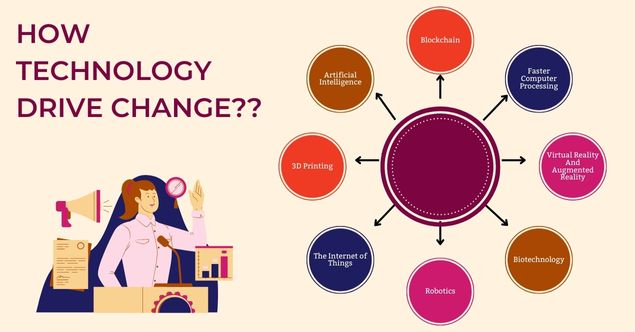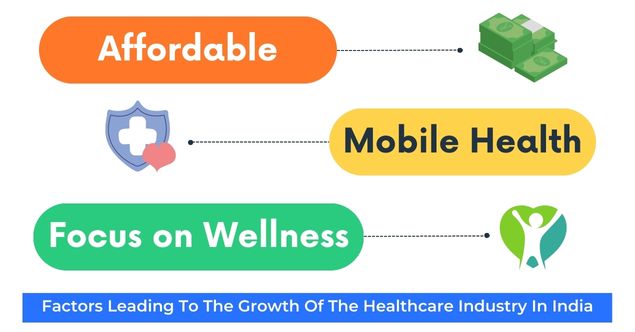Fall Of Silicon Valley Bank And Its Impact On Worldwide
Silicon Valley Bank’s fall is a stark reminder of how quickly a financial crisis can spiral out of control and have a global impact. From bankruptcy to unfilled orders and liquidity problems, the dramatic decline of an institution that was once so reliable has been truly devastating.
It brought about unprecedented levels of disruption around the world as governments scrambled to find solutions for their affected citizens and companies. Numerous businesses faced tough decisions regarding payment delays and operations continuity, resulting in hugely painful losses for many stakeholders both directly and indirectly affected.
Silicon Valley Bank, known as the 16th largest bank in the world and also plays its part in lending money to the most prominent technology startups, collapsed last 10 March 2023 after defrauding all its investors and depositors. The impact of the Silicon Valley Bank Collapse was that there was a huge recession in the markets across the globe.
The Silicon Valley Bank which is based in California became one of the biggest bank failures after the 2008 financial crisis and barely 2 days after its declaration was made, it saw a sharp drop in deposits resulting in Share sales started to be organised, resulting in both investors and customers jumping off the sinking ship upon hearing the news of the Silicon Valley Bank Collapse.
This profound erosion of confidence in banks and financial institutions puts into perspective our interconnectedness, as what happens in one corner of the world can have lasting ripple effects on another. It also serves as a case study on how institutions must constantly strive to stay ahead with risk management practices that identify potential weaknesses before they become unmanageable.
Silicon Valley Bank
Rated as the 16th largest bank in the United States until the crash, Silicon Valley Bank also known as (SVB) is a regional bank in the US, headquartered in Santa Clara, California.
Incorporated in 1983, SVB was reckoned as quite trendsetting because it was among the back then banks to set focus on start-ups and venture capitalists.
In December 2022, 56% of its loans were to VCs and PEs secured by their limited partners. SVB is held by SVB Financial Group, which has operations in the US across ten countries, including India.
Silicon Valley Bank Collapse
The Silicon Valley Bank UK unit is on the verge of being announced bankrupt, the business has already been closed by the bank and new customers are not being taken by the bank anymore since then.
On 11 March 2023, leaders of about 180 companies presented a letter to Britain’s Chancellor Jeremy Hunt calling for intervention in the aftermath of the Silicon Valley Bank Collapse.
Although it is being said that the UK is just the start in relation to the Silicon Valley Bank Collapse. Silicon Valley Bank also had branches in Canada, Denmark, Germany, India, Israel, and Sweden, and there are frequent warnings that a Silicon Valley Bank failure could wipe out startups across the globe without the existence of a government.
Some of the facts that have become clear regarding the bankruptcy of Silicon Valley Bank:
- The Silicon Valley bank effected what was shown to be the biggest retail banking failure since the 2008 global financial crisis.
- Valley Bank was closed on 10 March by US regulators and its deposits were seized. According to Silicon Valley Bank News, the hi-tech lender’s share price plummeted among customers running on deposits.
- The Silicon Valley Bank Collapse was when the Silicon Valley Bank invested most of its assets in US bonds after earning a massive amount of money by investing in tech startups.
- And to reduce the rate of inflation, the Federal Reserve Bank manipulated interest rates last year 2022, resulting in bond prices going down.
- Startup funding has also been reduced in the midst of the covid-19 pandemic, as bank customers have withdrawn massive amounts of money.
How did it fail?
The fall of SVB is rather unique because it’s a case of asset liability management (ALM) mismatch concerns, which show solvency issues for the bank. From the end of 2019 to March 2022, the bank’s deposits of more than $198 billion; growth outstripped the industry by around 37%.
But hit by the pandemic, the deployment opportunities for funds were very limited. Hence, deposits were channelised towards investments where there are two types of instruments which are shorter duration investments classified as available for sale (AFS) and longer duration instruments classified as held to maturity.
Who has been impacted by Silicon Valley Bank’s collapse?
Silicon Valley Bank (SVB) is based in Santa Clara, California, but has its other branches in Canada, China, Denmark, Germany, India, Israel, Sweden, and the UK as well.
The complete extent of exposure and damage has yet to be completely understood, but various governments sprung into action over the weekend to start assessing the situation.
(CA)Canadian bank regulators have seized SVB’s branch to protect creditors, according to a statement released from the country’s financial superintendent, Mr Peter Routledge. Toronto ad tech firm AcuityAds has come up with nearly all of its cash, totalling about $55 million, in SVB.
Over 60 Indian startups backed by US startup accelerator Y Combinator (YC) have over $250,000 tied up in SVB, according to TechCrunch report data, while there are more that have over $1 million. India’s state minister of technology Rajeev Chandrasekhar announced through Tweet that he would meet with startups this week to assess the damage.
(IL) Israeli prime minister Benjamin Netanyahu has sworn to carry out a damage assessment in SVB. Domestic business paper Globes said that SVB’s collapse has been similar to “closing the oxygen pipe” to the Israeli tech industry, which has close ties to Silicon Valley.
(CN)Chinese firms, many in the biotech industry, have been rushing to reassure spooked investors. Among them is BeiGene, one of China’s leading firms researching cancer treatments, which launched around 4% of its cash, or about $175 million, is frozen in SVB.
SVB’s China joint venture, SPD Silicon Valley Bank, declared over that same weekend that its operations are “stable” and “independent.” Meanwhile, other startups firm are seeking banking alternatives.
According to a Reuters report, around 16 firms in Europe’s tech and life sciences sectors had around $190 million in exposure to SVB. EU (Eupore) analysts say there’s limited risk for the euro zone’s banks, but that hasn’t stopped markets from sliding.
How SVB Crisis opened
On 10 March 2023, the tech and startup-focused lender was ordered to shut down by California regulations. And it was asked to keep it under the management of the Federal Deposit Insurance Corporation. In response to the How SVB Crisis opened, an overnight jolt occurred when SVB shares plunged a whopping 60% in premarket trade.
After this, the depositors started competing to withdraw money from the banks.
Meanwhile, news came out that SVV Financial Group was also in the process of selling itself after its failed fundraising attempt in the market.
But in relation to the Silicon Valley Bank Collapse, there were no advantages of any kind because the deposits went out very quickly. And sooner after it was posted by the FDIC that SVV had been closed down by the California Department of Financial Production and Innovation.
A brief timeline of Silicon Valley Bank’s collapse
-
March 9: SVB’s stock fell 60%, amounting to an $80 billion wipeout
-
March 10: California regulators shut down SVB and place it under the management of the Federal Deposit Insurance Company (FDIC)
-
March 12: US regulators state that by March 13, depositors will have access to their funds, including those above the $250,000 insurance threshold. US treasury secretary Janet Yellen declared SVB will not receive a bailout.
-
March 13: The UK government and Bank of England came up with the facilitated sale of SVB’s UK unit to HSBC.
Impact of Silicon Valley Bank’s collapse on Indian startups
The collapse of Silicon Valley Bank, the biggest vendor in the startup ecosystem, is the possibility to negatively impact the Indian startup scenario as well as it has injected a lot of uncertainty in the sector overnight, industry experts say.
“Hopefully the matter will get resolved soon, but I think it is a big shot for Indian startups,” Ashu Garg, a prominent Silicon Valley-based venture capitalist and early-stage investor for over the last two decades, told Press Trust India in an interview.
The FDIC, in a statement, said as of December 31, 2022, the Silicon Valley Bank had around USD 209.0 billion in total assets and about USD 175.4 billion in total deposits. At the time of closing, the number of residues in excess of the insurance limits was undetermined.
The number of uninsured deposits will be determined once the FDIC obtains extra information from the bank and customers.
“The Silicon Valley Bank has been a real supporter of the Indian startup scene and has provided banking services. Most Indian startups that do business in the US use this bank because it is one of the few institutes willing to work with Indian banks. A lot of the banking institutes do not want to work with an overseas client,” Garg, an alumnus of IIT Delhi, said.
“So, SVB has been able to work with the Indian companies that do not have US employees. So if they (are gone complete), it will be very problematic for the Indian (ventures),” he said in response to a question.
Over the past various years, SVB has been one of the most preferred choices of banking for startups and the tech industry in Silicon Valley, mainly because of its understanding of the sectors and flexibility in many aspects suiting the startup ecosystem in India.
Given that every third startup in Silicon Valley is founded by Indian Americans, experts feel a significantly large number of these founders would be impacted as early as next week in terms of even making basic payments and giving paychecks to their employees.
Similarly, a huge number of Indian startups which do not have even a staff or an office in the US had opened up their accounts in the Silicon Valley Bank as it let them do so without many regulatory questions and with a client-friendly approach.
The implications of the collapse of SVB on Indian Americans and their companies are very serious about it, Garg said. “The Silicon Valley Bank is the biggest vendor to the startup ecosystem. So now you have all these loan facilities.
Summary
The collapse of Silicon Valley Bank is the biggest bank failure in the United States since the global financial crisis. The bank’s vulnerability was the result of having a high proportion of uninsured deposits and a huge proportion of deposits invested in hold-to-maturity securities.
While Asian lenders are being seen as more insulated from direct risk, investors questioned whether a government rescue plan will prevent any more fallout from SVB’s collapse. According to a report from Bloomberg data, the combined market capitalization of the MSCI World Financials Index and MSCI EM Financials Index dropped about $465 billion in three days.
FAQ’s on Silicon Valley Bank:
Must read articles:


